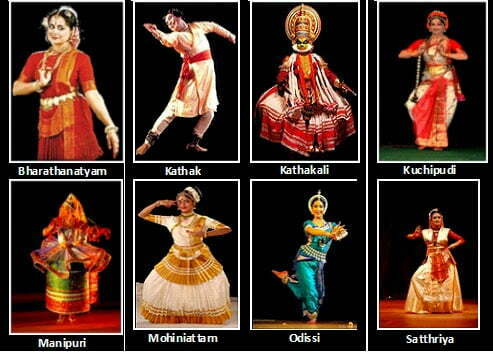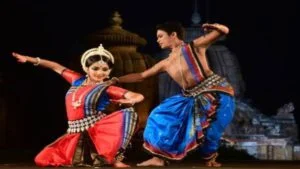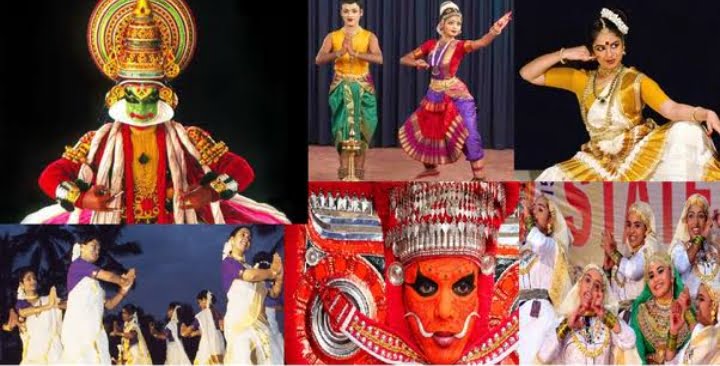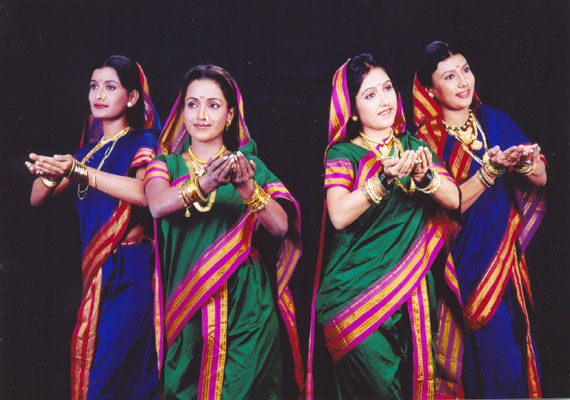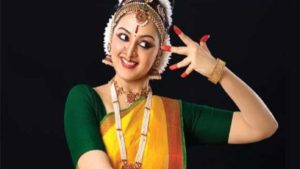Karnataka, one of India’s several states, has made a significant contribution to Indian culture. The influence of Karnataka has moulded the cultural worldview of India.The various dance styles that have their origins in Karnataka are one of the most important forms that the world witnesses today.
Karnataka’s dances are a reflection of the state’s diverse cultural landscape. Dances from both the folk and classical genres are popular in various sections of the state.
From Folk dances to Dance Dramas, here is a list of 5 major dance forms of Karnataka!
Folk Dances Of Karnataka

Folk dance is a form of expression, sharing, and connection with one’s own traditional culture. The word “folk dance” refers to dances that have great traditional influence and date back to a time when there was a divide between “ordinary folk” and “high society” dances. Individuals from a certain location perform this dance form reflecting the region’s tradition, culture, and way of life. Many current dance genres, in fact, are based on ancient folk dances from the past.
Following are some major folk dances of Karnataka:
Dollu Kunitha
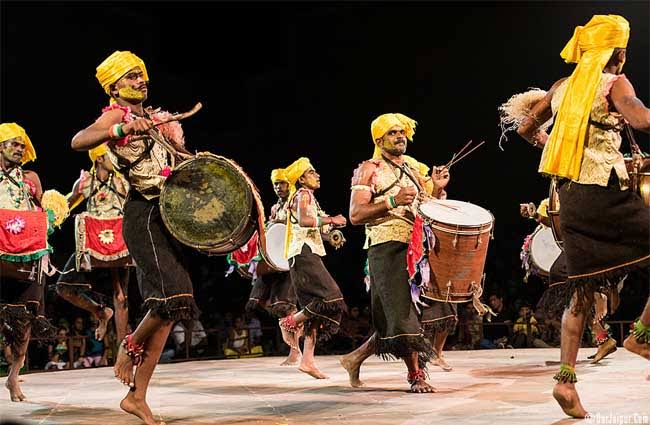
Karnataka’s Dollu Kunitha is a popular drum dance with singing. Dollu Kunitha dance, a prominent type of art, is the most popular folk dance. It’s a famous folk dance related with the devotion of Sree Beeralingeshwara, who is thought to be a manifestation of Lord Shiva. A group of 10-12 drummers performs this dance. The Dollu Kunitha team is open to both men and women.
To be able to handle the heavy drum for hours and dance with it requires a lot of strength and endurance. Drum bearers beat their drums in time while singing and accompanying music usually in a round or semi-circular pattern. The pounding of the drum, the rhetoric it generates, the excitement, the changing pace, and the overall atmosphere are all amazing.
Gaarudi Gombe
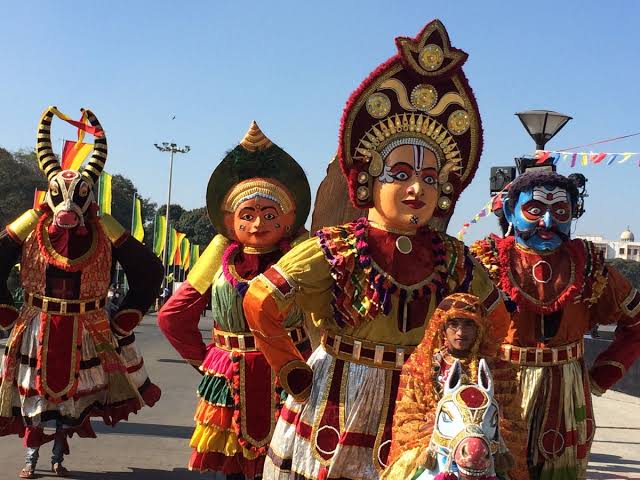
The unique folk dance Gaarudi Gombe (magical dolls) may be found in many districts of Karnataka. Dancers dress up in gigantic doll-like outfits made of bamboo sticks. This dance is done at significant festivals and in the procession that takes place during the Mysore Dasara festivities. Because the dancing performance can last up to eight hours, the dancers switch turns while carrying the large dolls. The majority of the performers are men due to the great weight of the dolls.
A reference to this Mask-Puppet dance can be found in Srimad Bhagavatham. Sri Krishna dons the large mask and dances to appease Satyabhama, one of his consorts. It’s quite colourful and appealing to the eye.
Veeragase

Veeragase is a traditional Indian dance genre that has its origins in the state of Karnataka. The entire dance performance is based on Hindu mythology, and it is a challenging traditional dance form in southern India. Performances are generally during the festival season, particularly during Duserra and even during the months of Shravana and Karthika.
The dancers don a bright red attire and a white traditional headdress. They also wear Rudraksha bead necklaces, rudra mukes (hip belts), Nagabharanas (neck ornaments) and anklets. Furthermore, it is mostly a group dance with a minimum of two and a maximum of six participants.
The simplest way to describe this type of dancing is that it is extremely energetic and vibrant.
Classical Dance Forms Of Karnataka
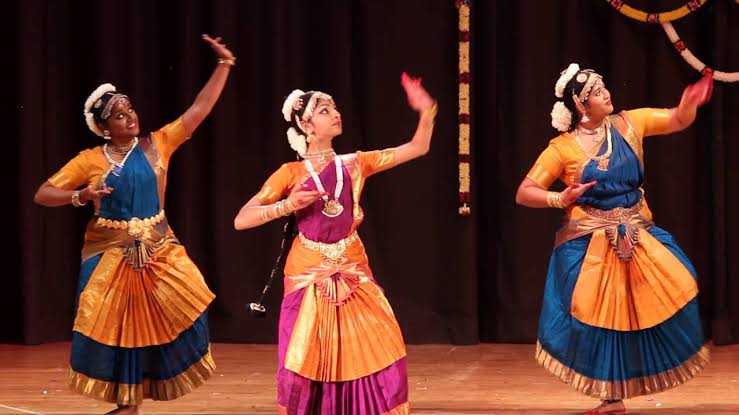
Karnataka is a major supporter of classical dance styles. The state has had a significant role in determining its structure and form since ancient times. The Mysore incorporation of Bharatnatyam dance is the state’s oldest and most popular dance form.
Kathak and Kuchipudi dance forms are also popular in the region. Indeed, Kuchipudi, the state dance of Andhra Pradesh, has its roots of origin in the state of Karnataka!
Dance Dramas Of Karnataka

Karnataka’s various dance dramas are also important forms of the state’s dances.
The Yakshagana, which is primarily performed in Karnataka’s coastal areas, is the most important form of dance drama in the state.
The mythical narrative Krishna Parijatha is based on is one of Karnataka’s most popular mythological legends.
Let’s take a closer look at two of these theatrical dance styles.
Yakshagana

Yakshagana is a South Indian dance-drama that has the most close associations with the state of Karnataka. Some of the most noticeable characteristics of the art form are the elaborate and colourful costumes, makeup, and masks. It evolved as a style of dance-drama in the 16th century, with roots in Sanskrit literature and theatre.
Yakshagana is a beautiful musical and literary dance work. It is a type of temple art that depicts Puranas and mythical stories. It has its recitals mostly in Kannada, although it is also performed in Malayalam and Tulu. The dance drаmа usually lasts all night, especially during winter harvests.
Mummela (foreground players) and Himmela (background actors) make up the mela or ensemble. This dance drama enchants the audience with their enthralling music and vibrant performances.
Krishna Parijatha

The mythical narrative Krishna Parijatha is based on is one of Karnataka’s most popular mythological legends. This art form depicts the rich and lively culture of the area. These creative forms reflect people’s beliefs and customs. The folk play is based on ancient religious texts.
The narrative is told in a group setting. It depicts the rivalry and jealousy between Krishna’s two consorts, Rukmini and Satyabhama, in a wonderful way. The dancers frequently dress in glitterati and wear gorgeous jewels that depict Lord Krishna, Rukmini, Satyabhama, and other key personalities. The use of make-up is commonly popular, as is the extravagant need for music and dance. To better explain the age-old themes, both prose and verse are used. They are captivating folk-performances that are frequently at night.
The excellent performance in this drama moves the audience to another world.
Final Thoughts
Dance has a long and glorious history in India, going back to ancient times. India is a multi-cultural and multi-traditional country. It’s difficult to keep up with Indian traditional dances because there are so many diverse and beautiful dance forms, each with its own purpose and meaning.
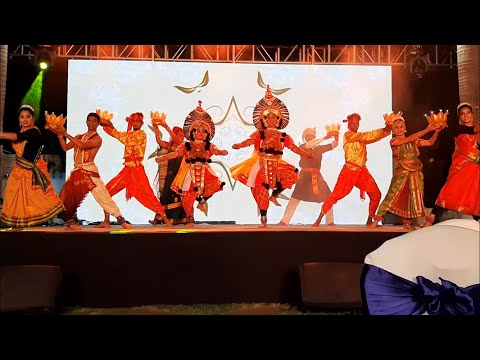
Karnataka dances are more than just creative manifestations; they are also a reflection of the state’s cultural history. It has incredible diversity in terms of language, arts, crafts, and festivals. So, if you’re planning to spend your vacation in Karnataka, be sure to include the Karnataka dances in your itinerary.
Indian dance forms have a grace that is worth mastering. Therefore, Podium feels immensely proud and happy to share these dancing forms with you. Check out our most recent update on the Classical Dance Archives for more information. If you found this article useful, please consider enrolling in one of our classes.
Also don’t forget to catch our newest article on Points to Keep in Mind While Writing Movie Reviews!
FAQs
What is the main dance form of Karnataka?
Kuchipudi is the primary dance form of Karnataka as it originated in the state. However, other classical dance styles, such as Bharatanatyam also play a vital role in Karnataka’s music and dance culture.
How many dance forms are there in Karnataka?
Karnataka is home to about 13 folk dance forms. In addition, 2 classical dance forms, namely Bharatanatyam and Kuchipudi are practised in the state. Kathak is also popular in the region.
What are the famous dances in Karnataka?
Dollu Kunitha and Yakshagana are two of Karnataka’s most well-known folk dances. Yakshagana is a Karnataka traditional theatre dance, whereas Dollu Kunitha is a Karnataka ritualistic dance.
Share with your friends

